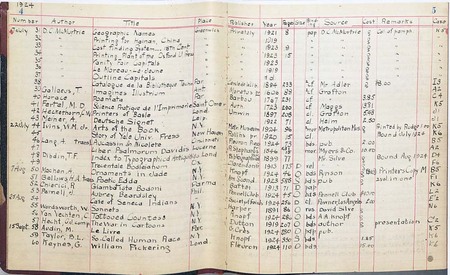What would you buy if you wanted to start a graphic arts collection?
Elmer Adler (1884-1962) began with the Roman Alphabet of Leonardo da Vinci (1509) purchased in March 1924 from W.A. Gough for $30. This was followed a day later by Aulus Cornelius Celsus’s De re medica (1554) given to Adler as a gift from David Silva. Not bad.
Adler’s accession book has now been digitized and is available online: http://libweb5.princeton.edu/visualmaterials/EA/AdlerAccessionBookopt.1.pdf
This is the collection which, for the most part, came to Princeton University as the beginning of a Graphic Arts Collection for Firestone Library. Take a look.
A Note on Da Vinci’s Roman Capitals
“Qebastian Serlio, in 1537, Albert Durer, in 1525, and Geoffroy Tory, in 1529, designed and published Roman capitals constructed by geometrical rules following order and method, but all three had been preceded by the great Da Vinci, whose Roman alphabet appeared in 1509.”
“The magnificent Roman capitals of Leonardo Da Vinci are the results of an attempt to apply to the letters of the alphabet certain basic geometric proportions. They were composed within squares, and were engraved on wood, with the lines and circles of projection also cut on the wood blocks, as models for constructing by almost purely mechanical methods an alphabet of letters in divine proportion. They are to be found in a treatise, “Divina Proportione,” by Luca Pacioli, printed at Florence in 1509, and which existed in manuscript for some time previous.”—Printing Art, Volume 39 (University Press, 1922).
